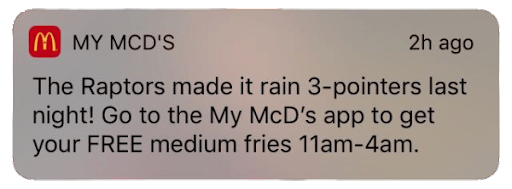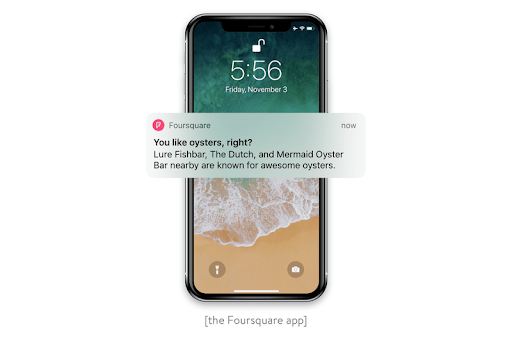Customer loyalty is often recognized as a by-product of a seamless experience that delights customers and keeps them coming back for more. The pandemic has made delivering on customers’ expectations even more difficult as they accelerate their mobile habits and expect what they need instantly.
And with phenomenal growth in mobile spend, usage, and app downloads in 2021 (up 30% from 2019), brands must deliver a superior mobile experience if they are to satisfy and retain their customers.
Of course, building customer loyalty takes time, but it doesn’t need to be complicated. It does, however, require optimization, data analysis, and a prudent approach.
This article discusses some simple mobile app strategies to help increase customer retention and build brand loyalty.
Power data-driven personalization
Most mobile marketers are now aware of the power of personalized communication in strengthening consumer-brand relationships. A study by Accenture found that 91% of customers are more likely to become repeat buyers after a customized experience with a brand.
And it’s easy to see why—content, offerings, and recommendations that are relevant, timely, and accurately based on a user’s behavior are much more likely to be perceived as helpful.
The key to successful personalization is to leverage your users’ app data to give them exactly what they want, when and where they want it. Brands that fail at this are not consistently relevant enough—and that’s mainly owing to how they use (or don’t use) the data available to them.
Netflix is a prime example of expert customization. Content adapts to each unique member’s interests and behavior, meaning every user experiences Netflix differently. According to the platform, “It enables us to not have just one product but hundreds of millions of products: one for each member profile.”
Netflix uses a multitude of machine learning algorithms and online A/B testing to drive its deep personalization of suggested videos, how the artwork appears, and what messages are sent to members to keep them informed and engaged. Netflix wants its members to spend less time looking for something to watch and more time watching something they truly enjoy.
Today we see many clothing retailers implement personalization into their product recommendations. For example, a customer may purchase a shirt and later receive a push notification suggesting an appropriate pairing to complete the outfit.
47% of consumers will turn to Amazon if the brand they are shopping with doesn’t provide relevant product suggestions. So, whether it’s through recommended titles for a streaming service or a customized reward based on past activity, giving customers a truly individual experience helps keep your brand top of mind.
Use geo to provide real value
Geo marketing is one of the fastest-growing tactics for mobile apps across all industries, with advertising spend growing 40% year on year.
Enriching a customer’s brand experience through a compelling geotargeting campaign can drive loyalty and be a clear differentiator for your brand.
There are several ways you can channel location data into your app marketing strategy. Geotargeting is used to serve users tailored messaging based on their location using attributes such as IP address and city.
Geofencing, on the other hand, creates a boundary within a specific region. When the target audience enters or leaves that boundary, they trigger the campaign and receive content, offers, or other messaging from the brand in real time. The use cases for each are countless.
This savvy location-based campaign by McDonald’s hits the nail on the head. The fast-food chain leverages local events and its users’ city—in this case, Toronto—to send timely push notifications in the form of a promotional offer to its residents when their basketball team wins the game.

Tailored engagements and offers like this delight users and increase the likelihood that they will continue to use your app and keep it installed on their mobile devices.
The example below from Foursquare perfectly pairs personalization with geotargeting. The search-and-discovery app cleverly employs users’ past behavior and preferences to accurately recommend a nearby place to eat.

A final example is from the beauty and cosmetics brand Sephora. They send this appropriate location-triggered push notification when users are in an airport that houses one of their stores:

The timing, relevancy, and lighthearted nature of this message perfectly resonate with users’ present environment, behavior, and needs.
Customizing recommendations and messaging based on location provides real-time value to users and makes the app feel tailored to their preferences—both of which boost long-term mobile user retention.
Deliver uber-relevant rewards
An attractive reward or offer can captivate your customers and encourage continued, repeat app usage. A survey from Hawk Incentives found that 97 percent of people actively seek out a deal when shopping—so we know customers place a high value on promotional offers. Naturally, the customer feels valued and as a result, is motivated to become a repeat customer.
Having access to your users’ notification center is powerful for engaging users with rewards. Certainly, data privacy regulations such as Apple’s ATT framework create some roadblocks for gaining consent, but there are effective strategies for gaining opt-ins. Hence, if you have consent and are not taking advantage of the channel, it is a missed opportunity. Let’s explore why.
Push notifications are a super engaging yet largely untapped channel that app marketers can use to increase engagement and deepen customer connections. Push provides almost guaranteed impressions since they are delivered as a pop-up directly to a user’s screen, capturing their instant attention.
As a result, push notifications achieve higher open and click-through rates than more traditional channels like email, making push one of the most effective channels for engaging and retaining users. The average click-through rate for email is 2-5%, whereas push notifications can fetch a CTR of 20% or more.
The average click-through rate for email is 2-5%, whereas push notifications can fetch a CTR of 20% or more.
What happens when you add personalization into the mix? Generic push notifications increase app retention rates by up to 10 times. So, can you imagine how much higher this can be when what you’re sending aims to reward customers in an individualized manner?
Using the rich data available from your app, you can cater offers to the unique user, providing them with applicable incentives to enhance their brand experience. For example, celebrating users’ membership anniversaries, birthdays, and in-app achievements can build strong emotional connections and inspire users to continue supporting your brand. Offering app-only rewards such as added discounts, extra loyalty points, or exclusive access to products also entices customers to stay active on your app.
By adding an under-exploited channel like push messaging to your marketing strategy, you can build direct 1:1 customer relationships and gain a strong competitive advantage.
MessageGears’s push messaging platform empowers apps to deliver automated and personalized alerts, connecting them instantly to their users.
Final thoughts
A loyalty-enhanced mobile app offers innumerable benefits. Consider research carried out by Frederick Reichheld of Bain & Company (the inventor of the net promoter score) that shows increasing customer retention rates by 5% increases profits by 25% to 95%. So, be sure to include loyalty in your omnichannel marketing strategy.
As a mobile marketer, maintaining and growing your customer loyalty requires you to implement valuable strategies that drive results. With MessageGears’s mobile app marketing software, you can create seamless, customer-centric mobile app experiences that delight your audiences and grow customer loyalty. Find out how you can get more from your mobile app.




